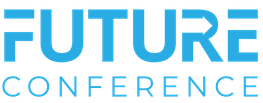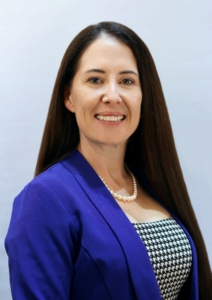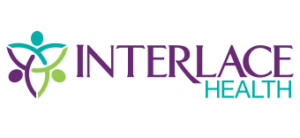
Recently, Interlace Health attended the Home Health Care News Future Conference 2024 event in Nashville, a highly anticipated gathering of home care and healthcare leaders. The event brought together industry CEOs, clinicians, and tech innovators to discuss the evolving landscape of home-based care. From payment models to AI-driven efficiencies, the sessions offered a glimpse into the future of healthcare delivery in the home setting. Here are some key takeaways from the event.
CEO Outlook: Hot topics on the agenda
In several sessions, leading home care CEOs shared their perspectives on the current and future state of the industry. The discussion highlighted some common threads and unique challenges they are all facing.
The Reimbursement Rollercoaster
The payor mix agencies’ experience varies drastically based on geographic area and patient demographics. Those like Home Helpers who rely on private pay for more than 70% of their revenue have greater flexibility than those like Help at Home who see 90% of their clients being dual-eligible for Medicare & Medicaid. President Tim O’Rourke from Help at Home shared “80-90% of care is now Managed Medicaid, a stark contrast from a few years ago when that figure was only 10%”.
Jaclyn Johnson from Homecare Homebase expanded in another session on the growing interest in Medicare Advantage plans, noting that “some agencies see are now seeing a 50/50 split between Medicare Advantage and traditional Medicare.” However, she also mentioned that “Medicare Advantage margins are currently at 112%, while traditional Medicare margins sit at only 5% — a huge gap that leaves little room for agencies to invest in growth”. Johnson continues “To counteract this, agencies are expanding service lines, including hospital-at-home, SNF-at-home, personal care, and private duty care. Diversifying offerings is essential for balancing out poor Medicare Advantage reimbursement rates and improving financial sustainability.”
Reinventing Recruitment & Retention Strategies
Staffing is one of the biggest challenges for the home care industry, and the CEOs didn’t shy away from the topic; with retention in particular being a key focus. By making employees feel valued and providing growth opportunities and emphasizing career laddering, agencies are better equipped to retain talent. But, does it really work? Help at Home CEO, Tim O’Rourke discussed how they have tackled the issue by offering flexibility for care providers that allows them to work with patients that best match their skills and preferences, resulting in a “68% retention rate, which is 2-3 times the industry average”.
Clinician satisfaction was another barrier to retention, with many panelists agreeing that home health technology is about 10 years behind the curve. Vice President of Strategy at Homecare Homebase, Jon Higgenbotham, explained “one of the biggest challenges for agencies is a lack of interoperability—how systems communicate and share data effectively”. Several large systems have made it difficult for other systems to integrate, creating barriers to efficiency for everyone. Automating process through technology is critical to reduce clinician burnout and improve operational efficiency, and was another core focus of the conversations at Future 2024.
The AI Revolution: Leveraging Technology to Overcome Headwinds
AI was a major topic of discussion, with multiple panels focusing on how AI could transform home-based care. From streamlining documentation and reducing administrative costs to improving the quality of care, AI is seen as the key to solving many of the industry’s pain points. During Jon Higgenbotham and Jaclyn Johnson’s session, both agreed that the future of clinician documentation lies in AI-powered voice narration. The technology will allow clinicians to dictate their notes during or after visits, saving significant time and reducing documentation errors. AI could also assist with predicting health declines and hospice transitions, making it easier to plan for critical patient needs.
Another area where technology will be pivotal is process automation. Clinicians like the flexibility of home health care but often feel overwhelmed by the number of administrative tasks that leave little time for patient care. Solutions like Interlace Health’s eSignature for Home Health eliminate documentation errors that lead to claims issues and authorization delays, which are significant barriers to reimbursement. Home health nurses spend 60% more time on paperwork and documentation than they do on patient care.
With the impending CMS 80/20 rule on the horizon, agencies must start flipping these numbers. Automating the workflows that are most prone to human error and removing those hurdles entirely not only helps you put that focus back on care, but it helps you get paid faster too.
The Future is in the home
The final session, “A Seat at the Table: Home-Based Care Providers as the Center of Emerging Models,” raised the big question: Will the home soon become the center of healthcare? Attending this conference made the answer very clear to me: the home is becoming the new epicenter of healthcare. With advancements in technology, AI, and changing care models, patients will receive higher-quality, more cost-effective care in their own homes – where they want to be. The industry faces significant challenges—particularly around labor shortages and reimbursement issues—but the outlook is optimistic. Agencies that can adapt to new technologies, leverage AI, and expand their service lines will thrive in this evolving landscape.
The future of healthcare is knocking on our front doors—and Interlace Health can help. Schedule a demo today.
We want to hear from you! How do these topics align with your agency?
Share your perspective in this 1-minute survey.
ABOUT THE AUTHOR:
Dessiree Paoli, Director of Product Marketing at Interlace Health
 Dessiree Paoli is the Director of Product Marketing & Strategy at Interlace Health, a company that transforms workflows by providing clinicians and patients with digital healthcare solutions. She has more than 20 years of experience in driving strategic marketing initiatives, leading teams, and developing integrated campaigns, and she has worked in healthcare for more than 14 years. Connect with Dessiree on LinkedIn.
Dessiree Paoli is the Director of Product Marketing & Strategy at Interlace Health, a company that transforms workflows by providing clinicians and patients with digital healthcare solutions. She has more than 20 years of experience in driving strategic marketing initiatives, leading teams, and developing integrated campaigns, and she has worked in healthcare for more than 14 years. Connect with Dessiree on LinkedIn.
Watch On-Demand Webinar: Home Healthcare News: The eSignature Effect




